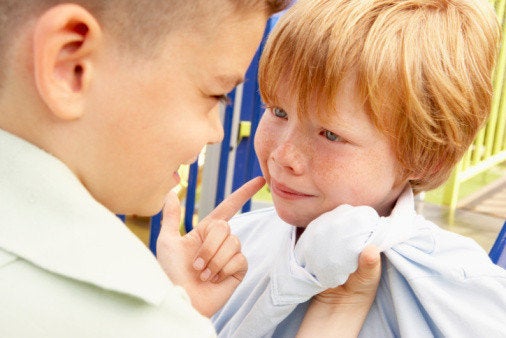
24/7 cell phone access and round-the-clock internet availability gives young people the opportunity communicate constantly. For many kids, it is a thrill to connect with friends throughout the Summer months and beyond the school day or a traditional curfew. For those who are targeted by bullies, however, it can seem as if there is no escape from relentless teasing, taunting, and texting. In an environment of non-stop connectedness, children need to know how to use assertive communication skills to disengage from bullying peers.
Assertive Communication Skills for Kids
Assertiveness is a style of communication in which a person expresses his thoughts and feelings in a verbal, non-blaming, respectful way (Long, Long & Whitson, 2008). In the context of bullying amongst young people, assertive communication is the essential middle ground between an aggressive comeback that escalates a bully's hostility and a passive response that projects a target's lack of power.
Bullies often target kids who they believe will not stand up for themselves. The more a bully confirms that he can pick on his target unchecked, the more he will do it. That's why an assertive response is so effective in countering bullying; the child who masters assertive communication demonstrates that a bully's attacks will be answered in a fair, but formidable way. When a bully realizes that his would-be target is too powerful to provoke, he most often moves on to an "easier mark."
What is an Assertive Response from a Child?
In the example below, consider which response would be most effective in neutralizing the bully's power:
Bully: "Where'd you get your outfit -- the clearance rack?"
Response 1: "Yeah, my mom made me wear it. I love what you have on, though. You always look so awesome."
Response 2: "I got it out of your closet, bitch."
Response 3: "Knock it off, Abby."
The first response feeds the bully just what she wants -- power! By complimenting Abby after such an obvious put-down, the target hands herself over, saying, "Reject me again, hurt me some more. Whatever you say is OK because I am just so desperate to be liked."
The second response challenges Abby to escalate her aggression. Snappy, humiliating comebacks invite bullies to keep the conflict going and turn up the heat for the next round.
The third response is assertive, letting Abby know that the victim does not intend to be victimized. It does not seek forgiveness, but does not pose a challenge either. It is simple and unemotional.
Why should you teach your daughter to use responses that are "unemotional?" Indications that a person can be emotionally impacted signal a bully that he will be able to wield power easily. By encouraging your daughter to respond without anger or fear, you teach her how to portray confidence. The bully, in turn, detects less potential for wielding control over her.
Assertive Body Language
Wording is important when teaching your child skills for assertive responses. Just as vital is the use of assertive body language to reinforce words. These non-verbal strategies alert a bully that your child means what he says:
•Make eye contact. Maintaining eye contact is a mark of emotionally honest and direct communication. Encourage your child to look a bully directly in the eye when speaking to him.
•Maintain an appropriate distance from the bully. Stand well within earshot, but not "in the bully's face" or shrinking back.
•Use a neutral tone. Shouting, cursing, or using a shaky voice negates the power of assertive words.
•Say the bully's name. This is an assertive technique that lets the bully know she is your equal.
Unlike the aggression that underlies bullying, assertive behavior does not depreciate or cause harm. Rather, assertiveness is a healthy way of defining personal boundaries. When parents teach their children the skills of assertive communication -- both verbal and non-verbal -- they strengthen them with lifelong skills for confident self-expression and healthy emotional boundaries.